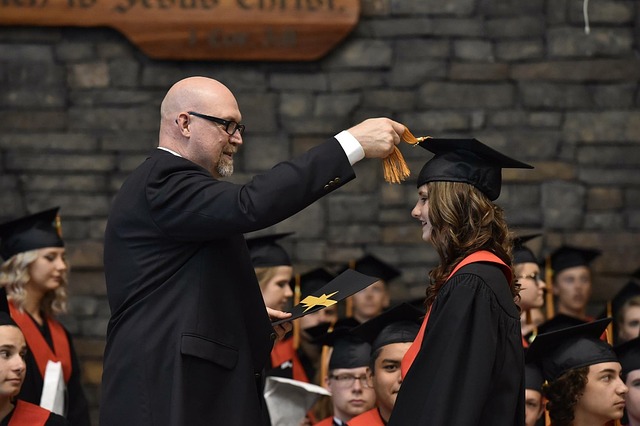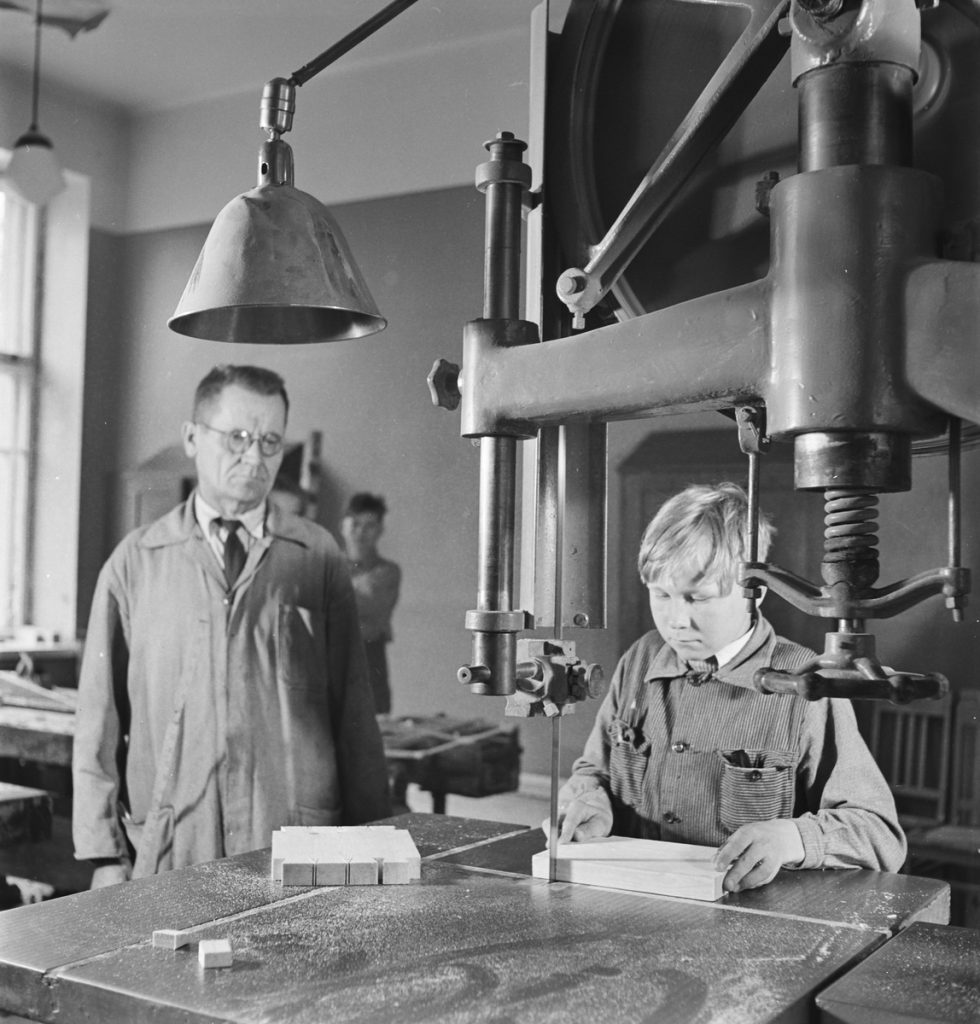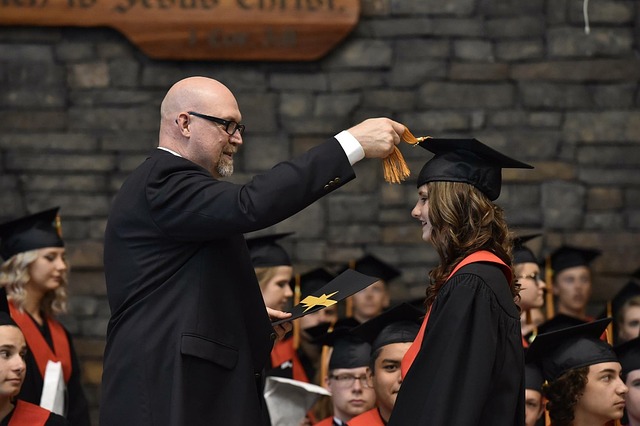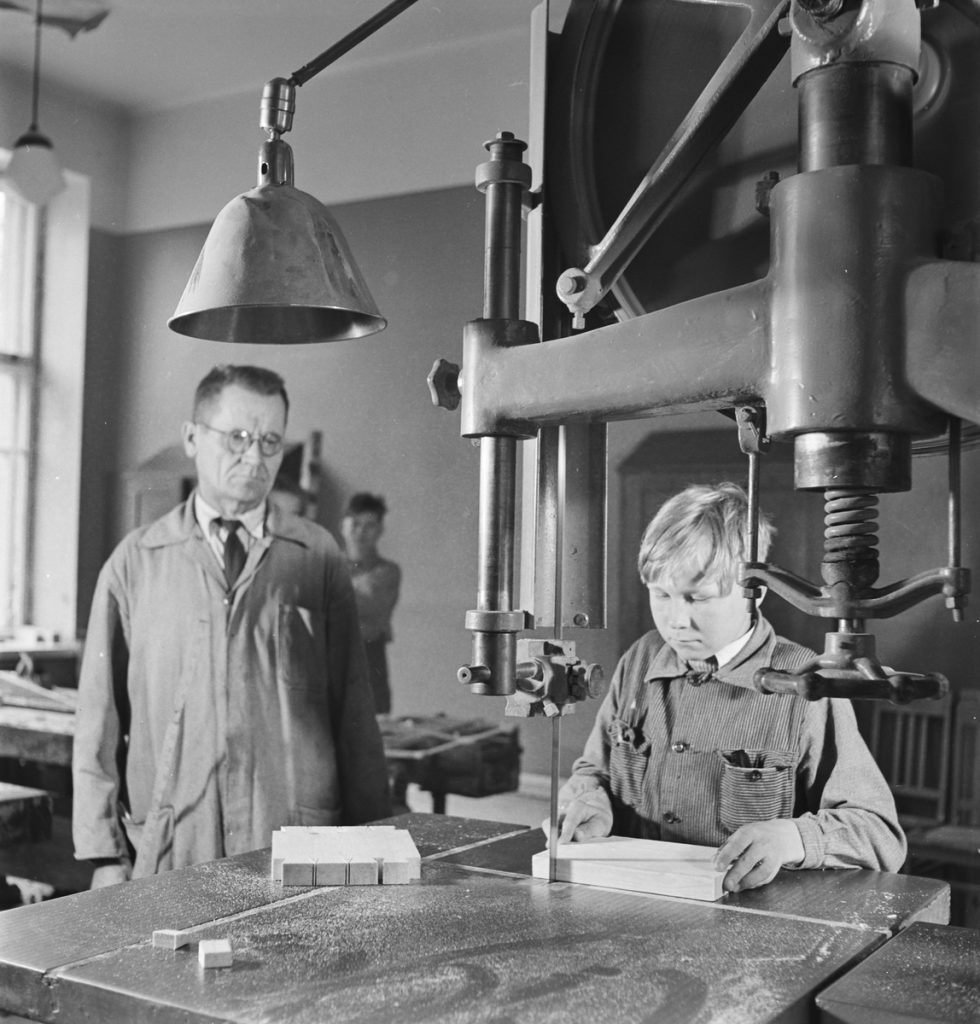Kari Lilja, TkT, Erikoistutkija; Sirpa Sandelin, TkT, Yliopettaja
English version: Click the link
SAMK isännöi Ammattikorkeakoulutuksen ja ammatillisen koulutuksen tutkimuspäiviä Porissa 2.-3.11.2023. Päivien yhtenä keynote-puhujana oli itävaltalainen Jörg Markowitsch, jonka teema liittyi niin läheisesti BA&VET-hankkeeseen, että aloin miettiä asiaa tarkemmin – suomalaisesta kontekstista käsin.
Voiko työtä ja oppimista yhdistää? Kysymys tuntuu jakavan niin tutkijat kuin opettajatkin kahteen leiriin, etenkin silloin kun puhutaan työpaikalla oppimisen ja koulutuksen kautta tapahtuvan oppimisen yhdistämisestä. Yleinen ajatusmalli Suomessa tuntuu tällä hetkellä olevan, että koulutuksen tehtävä on antaa, paitsi riittävä yleissivistys ja valmius elämään, myös valmiudet ammattiin niin, että henkilö koulusta tultuaan on heti kykenevä niihin vaativimpiinkin tehtäviin, joita se ammatti, jonka hän on opiskellut, voi eteen heittää. Olen kuullut, että esimerkiksi yliopistojen ja ammattikorkeakoulujen opettajat ovat sanoneet liiketalouden opiskelijoille, että ”kun te täältä valmistutte ja menette johtotehtäviin…”
Ei se niin mene.

Koulutus voi parhaimmillaankin vain antaa valmiudet kehittyä ja kasvaa ammatissaan ja toimessaan. Vaikka henkilöllä olisi kuinka hyvät teoriatiedot, vasta kokemus antaa kyvyn soveltaa ja kehittää näitä taitoja. Koulutuksen kautta ihminen voi esimerkiksi tuntea työsopimuslain kaikki kiemurat, mutta vasta kokemuksen kautta hän osaa arvioida, milloin työsuhteen yksipuolisen päättämisen edellytykset täyttyvät. Yhtälö toimii kyllä toisinkin päin. Voit olla käytännön tasolla erinomainen ammattihenkilö, mutta jos et sähkömiehenä tai putkimiehenä tunne alaasi liittyvää teoriaa, tai et kirveshenkilönä osaa laskea katon tai luiskan kulmaa annetun nousuprosentin perusteella, teet todennäköisesti koko ikäsi vain hanttihommia.
Koulutus ja käytännön kokemus tukevat toisiaan.
Toinen työn ja koulutuksen yhdistämiseen liittyvä kiistakapula on kysymys ammatillisen koulutuksen maksajasta. Suomessa ammatillisen ja yleissivistävän koulutuksen maksaa yhteiskunta. Myös opiskelu yliopistoissa on pääsääntöisesti ilmaista – ainakin lukukausimaksujen osalta. Tämä malli on suhteellisen harvinainen maailmalla. Maineikkaimpien yliopistojen lukukausimaksut saattavat olla kymmeniä tuhansia euroja ja jopa enemmän. Ammatillista peruskoulutusta voivat antaa yritykset harjoittelijaohjelmillaan ja isoimmilla yrityksillä voi olla omia oppilaitoksiaan tai sopimuksia kaupallisten tai ei voittoa tavoittelevien ammatillista koulutusta tarjoavien organisaatioiden kanssa. Työpaikan saavat vain parhaiten menestyvät, ja ammatillista jatkokoulutusta tarjotaan ja kustannetaan niille, joiden työnantaja haluaa pysyvän palveluksessaan. Luulisi, että tämä malli sopisi suomalaisillekin yrityksille. Antaahan se yrityksille suuren vallan niin työntekijöihin nähden kuin koulutuspolitiikankin suhteen.

Vaan kun ei niin ei…
Osasyynä tähän on tietysti verotus. Yrityksen on pystyttävä perustelemaan, miten koulutuskulu liittyy yrityksen liiketoimintaan ja osoitettava, että jokaisella on halutessaan mahdollisuus samaan koulutukseen. Muuten kulu on vähennyskelvoton ja voi pahimmillaan muuttua koulutettavan veronalaiseksi eduksi. Tällä säännöksellä valtio on halunnut estää vakavasti otettavien kilpailijoiden muodostumisen valtion rahoittamalle ja kontrolloimalle koulutukselle. Toinen usein kuultava perustelu työnantajien vastahankaisuudelle ottaa koulutusvastuuta omiin käsiinsä, on nykynuorten kyvyttömyys sopeutua työelämään ja sen pelisääntöihin. Työssä vaadittavat taidot voitaisiin kyllä opettaa, mutta kasvatusvastuu kuuluu kodeille.
Samanlaisia kommentteja olen kuullut monilta opettajilta ihan yliopistoja myöten
Viime kädessä kunkin valtion koulutusjärjestelmä, oli sitten kyse yleissivistävästä, ammatillisesta tai korkea-asteen koulutuksesta, riippuu siitä, minkälaista koulutuspolitiikkaa maassa harjoitetaan. Ja se taas on suurelta osin kiinni siitä, mikä tai mitkä funktiot nähdään koulutuksen tärkeinä tehtävinä.
Kansakoululaitoksen alkuaikoina tehtäviä olivat lukutaidon edistäminen, kansan sivistäminen ja tapainturmeluksen estäminen tai ainakin lievittäminen. Ääneen lausumattomia syitä taisivat olla myös työvoiman saanti orastavaan teollisuuteen ja kansan irrottaminen kirkon vahvasta holhouksesta. Voltairen, Rousseaun ja muiden valistuksen ajan filosofien humanismi ja pedagogiset ajatukset valuivat Pietarista Tolstoin hovista kansakoulun isäksi mainitun Uuno Cygnaeuksen välityksellä Pohjolan perukoille asti. Kun patruunat 1800-luvun lopulla ja 1900-luvun alussa perustivat ja rahoittivat kansakouluja, konepajakouluja ja teollisuuskouluja, motiivi oli jo täysin selvä. Suomeen piti saada osaavaa työvoimaa teollisuuden tarpeisiin.

1950-luvulla, suurten ikäluokkien myötä, tilanne mullistui. Valtaapitävät halusivat säilyttää yhteiskuntarauhan pitämällä nuoret kauemmin koulun penkillä. Koululaitos muodostui työvoimareserviksi, varastoksi, jolla toki oli myös toinen funktio: lisätä väestön koulutuksen tasoa niin, että se vastaa kehittyvän teknologian haasteisiin. Nyt väestön kehityksen suunta on toinen. Ikääntyvä väestö poistuu työmarkkinoilta kiihtyvään tahtiin, ja tilalle pitäisi saada seuraajia. Siitä huolimatta hallitus jokunen vuosi sitten pidensi oppivelvollisuusikää 18 vuoteen ja puhui samalla työuran jatkamisesta toisesta päästä.
Sinällään oppivelvollisuuden jatkaminen olisi ollut perusteltua, jos tuo jatkoaika voitaisiin käyttää tehokkaasti tarvittavien taitojen ja yleissivistyksen lisäämiseen. Toisin kävi. Samalla kun oppivelvollisuutta jatkettiin, toteutettiin ammatillisen koulutuksen uudistus, jonka tavoitteena ilmeisesti oli vastata oppivelvollisuuden pidentämisen tuomiin resurssitarpeisiin ammatillisen koulutuksen puolella pienentämällä yhden oppilaan vaatimaa / saamaa resurssia. Lopputuloksena oli ammatillinen koulutus, josta yhden työnantajan sanojen mukaan ”voi valmistua koskematta kertaakaan ammattinsa vaatimiin työkaluihin”.
Odotan mielenkiinnolla, koska ympyrä pyörähtää niin paljon eteenpäin, että ollaan takaisin lähtöpisteessä ja työnantajat perustavat omia koulujaan saadakseen osaavaa työvoimaa.

Toki voisi olla muitakin vaihtoehtoja. Niitä, joihin viittasin alussa. Työnantaja voisi antaa käytännön koulutuksen työpaikalla ja siihen voitaisiin yhdistää teoriaosuus ammatillisessa oppilaitoksessa, ammattikorkeakoulussa tai jopa yliopistossa. Tämä malli voisi olla erittäin kätevä työurilleen jatkoa haluaville. Onhan jo nyt Suomessa Jörg Markowitschin kokoamien lukujen mukaan työharjoittelussa olevien keski-ikä noin 36 vuotta ja 39 prosenttia harjoittelijoista on yli 40-vuotiaita, kun Itävallassa harjoittelijoiden keski-ikä on alle 20 vuotta ja harjoittelijoista 80 % on alle kahdenkymmenen. Työuraansa jatkavilla olisi jo yleissivistystä ja elämänkokemusta, ja useimmat heistä, ainakin toivottavasti, jo tietävät, miten työpaikalla käyttäydytään, ja mitä työnantajat heiltä odottavat.
English version
Can work and learning be combined?
SAMK hosted the research days of the Universities of Applied Sciences and Vocational Education Institutes in Pori on November 2-3, 2023. One of the days’ keynote speakers was Jörg Markowitsch from Austria, whose theme was so closely related to the BA&VET project that I started to think about it in more detail – connecting it with the Finnish context.
Can work and learning be combined? The question seems to divide both researchers and teachers into two camps, especially when talking about combining learning in the workplace and learning through education. The general thought pattern in Finland at the moment seems to be that the task of education is to provide not only sufficient general knowledge and preparation for life, but also preparation for a profession so that a person is immediately capable of even the most demanding tasks that the profession he has studied can throw at him upon leaving school. I have heard that, for example, teachers teaching business management at universities and polytechnics have told their students that ”when you graduate from here and go into management positions…”
It doesn’t work like that.

At best, education can only give you the skills to develop and grow in your profession and work. No matter how good a person’s theoretical knowledge is, only experience gives the ability to apply and develop these skills. Through education, for example, a person can know all the ins and outs of the Employment Contracts Act, but only through experience can he judge when the conditions for unilateral termination of the employment relationship are met. The equation works the other way around. You can be an excellent professional on a practical level, but if you, as an electrician or a plumber, do not know the theory related to your field, or if you, as a carpenter, cannot calculate the angle of a roof or slope based on the given percentage of rise, you will probably only do routine tasks all your life.
Education and practical experience support each other.
Another bone of contention related to combining work and education is the question of who pays for vocational education. In Finland, society pays for vocational and general education. Studying at universities is also generally free – at least as far as tuition fees are concerned. This model is relatively rare in the world. In other countries, the tuition fees of the most famous universities can be tens of thousands of euros and even more, basic vocational training can be provided by companies through their trainee programs, and the largest companies can have their own educational institutions or contracts with commercial or non-profit organizations providing vocational training. Only the best achievers get a job, and further vocational training is offered and paid for those who are wanted to stay at their workplaces. You would think that this model would also suit Finnish companies. After all, it gives companies a lot of power over employees as well as in terms of education policy.

But if not, then no…
Part of the reason for this is, of course, taxation. The company must be able to justify how the training expense is related to the company’s business and show that everyone has the opportunity for the same training if they wish. Otherwise, the expense is non-deductible and at worst can turn into a taxable benefit for the trainee. With this provision, the state has wanted to prevent the formation of serious competitors for state-financed and controlled education. Another frequently heard justification for employers’ reluctance to take responsibility for education into their own hands is the inability of today’s youth to adapt to working life and its rules. The skills required at work could be taught, but the educational responsibility belongs to the homes.
I have heard similar comments from many teachers all the way up to universities.
In the last resort, the education system of each state, whether it is general education, vocational or higher education, depends on what kind of education policy is practiced in the country. And that again largely depends on which function or functions are seen as the important tasks of education.
In the early days, the tasks of the elementary school were promoting literacy, civilizing the people and preventing or at least alleviating corruption of morals. Unspoken reasons were probably also the supply of labour for the budding industry and the separation of the people from the strong patronage of the church. The humanism and pedagogical ideas of Voltaire, Rousseau and other philosophers of the Enlightenment flowed from St. Petersburg, from Tolstoy’s court, through Uuno Cygnaeus, who is mentioned as the father of the national school, to the far ends of Norden. When the factory owners in the late 19th and early 20th centuries founded and funded public schools, engineering schools and industrial schools, the motive was already completely clear. Finland had to get skilled labour for the needs of industry.

The Finnish Heritage Agency, Department of Ethnology
In the 1950s, with the baby boomers, the situation changed. The authorities wanted to maintain social peace by keeping young people in school longer. The school became a labour reserve, a warehouse, which of course also had another function: to increase the level of education of the population so that it meets the challenges of developing technology. Now the direction of population development is different. The aging population is leaving the labour market at an accelerating pace, and replacements should be found. Nevertheless, a few years ago the government extended the compulsory education age to 18 years and at the same time talked about continuing the working career from the other end.
The extension of compulsory education would have been justified if that extension could be used effectively to increase the necessary skills and general education. It was the other way around. While compulsory education was extended, a reform of vocational education was carried out, the aim of which was apparently to respond to the resource needs brought about by the extension of compulsory education on the vocational education side by reducing the resources required/received by one student. The result was vocational training, from which, according to one employer, ”you can graduate without ever touching the tools required by your profession.”
I’m looking forward to seeing the circle turning so much forward that we’re back at the starting point and employers are setting up their own schools to get a skilled workforce.

Of course, there could be other options. The ones I referred to at the beginning. The employer could provide practical training at the workplace, and it could be combined with a theoretical part at a vocational school, university of applied sciences or even a university. This model could be very convenient for those who want to change or continue their career. According to figures compiled by Jörg Markowitsch, the average age of trainees in Finland is already around 36 years and 39 percent of trainees are over 40 years old, while, e.g., in Austria the average age of trainees is under 20 years and 80% of trainees are under twenty. Those who continue their working career would already have general education and life experience, and most of them, at least hopefully, already know how to behave in the workplace and what employers expect from them.
Artikkeli on kirjoitettu Euroopan unionin rahoittaman BA&VET-hankkeen puitteissa. Vastuu artikkelissa esitetyistä näkemyksistä on yksinomaan kirjoittajilla.
This article was written in the framework of the project BA&VET funded by the European Union. The sole responsibility for the views expressed in this article lies with the authors.

